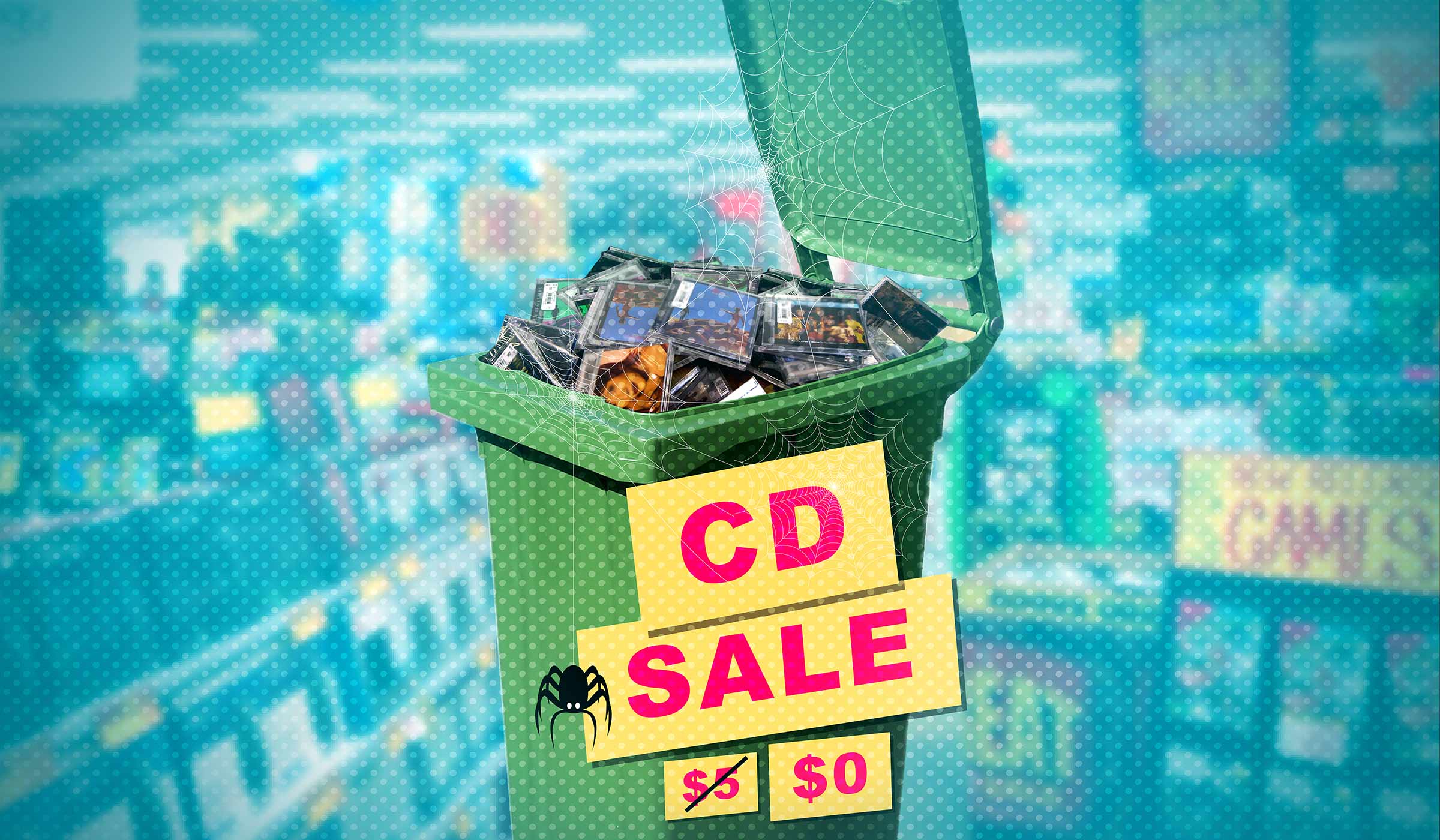The death of CDs vs Shazza in Dubbo

At last week’s FastForward conference in Sydney, Ash London of the Hit Network described one listener stereotype as: “The woman we like to call Shazza in Dubbo, and Shazza in Dubbo still shops at Sanity and JB HiFi.”
It would seem that Shazza in Dubbo holds the future of the humble CD on her shoulders.
According to this week’s wholesale figures released by ARIA, physical product accounted for a “healthy 25% of the overall market” in 2017. In light of the overall 10.5% increase of the value of the Australian recorded music industry – the highest annual growth since 1996 – it appeared that maybe Shazza and co. have put physical sales back on track.
The statistic – not contextualised by how it compares to previous years – seemed to suggest the future of the CD, while maybe not secure, was stable. This was compounded by the positive context of the report and sentences dubbing physical formats a “vital part of the music business” and the demonstration of its “enduring power of reinvention and popularity.”
However, TMN has calculated from ARIA figures spanning 2008 – 2017 that this isn’t the case.
Physical product accounted for a massive 87.27% of wholesale music sales in 2008. By 2017, we were down by 62.59% to just 24.68%.
Since 2008, there has been an average 6.96% yearly decline in physical wholesale sales, despite vinyl increasing for the seventh year running.
In the last five years, streaming services have done a complete switch with physical sales. In 2012, physical product accounted for 53.7% of the wholesale market. By 2017, streaming services have taken their place at 54%.
Industry professionals around the globe have been touting the death of the music industry for over a decade, largely due to the plummet in physical sales as pirating threatened to undermine the industry, closely followed by the advent of streaming services and the decrease of downloads. The new digital music economy scared many with the realisation that the old metric of success would go the way of the dinosaur.
Businesses were restructured; efforts were redirected at working with the new streaming model; physical distribution was quickly seen as antiquated.
Recently, the marketing, sales and distribution arm of Warner Music Group, WEA, have offered a voluntary resignation to around 130 employees working with physical product in what seems to be a reaction to the decline of CD sales. They have 45 days from the date of notice to make their decision regarding the buy-out.
Mega-stores such as Best Buy in the States have recently announced that they will stop selling CDs on July 1, with Target whispered to follow.
Is it really the end of the humble CD?
If you ask someone who still buys CDs “why?” they’ll tell you it’s because it’s what they’ve always done. That they like the tactility of the product, or that the retail experience is still favoured. Over 35s remain the driving force behind physical sales, despite the renewed demand for vinyl among Millenials.
Albums like Adele’s 25 (2015) and 21 (2011) going 10x and 15x Platinum respectively; P!NK’s Funhouse (2008) at 11x Platinum; and Michael Buble’s Christmas which spent six consecutive years as one of the ten best-selling albums in Australia, show that pop is still ruling physical sales. Even Kylie’s Golden clocked up 5,894 disc sales this week, yet streaming only accounted for less than 5% of 8,745 sales units, calling into question ARIA’s streaming algorithm towards charts.
According to the 2016 Australian Music Consumers Report, while 1 in 5 ‘music passionates’ use streaming as their primary method of consumption, this only applies to 1 in 10 ‘Rest of population’. Conversely, 23% of ‘Rest of population’ use CDs as their primary method, compared to 16% of ‘music passionates’. The study found that “almost half (49%) of Australians are over 44 years old and this demographic are driving consumption through radio and CDs.”
Once you get into the 44+ demographic, the study found that old media becomes the primary method for up to 87% of consumers. However, as the Australian population matures and the current millennials and Gen Zs enter their 30s and 40s, the demand for old media will only continue to decrease.
CEO of Media Insight Consulting and partner of the study, Chris Carey, added that “as well as new formats coming in, hardware is changing. Many laptops don’t have CD drives, many new cars don’t. The opportunity to use CDs is diminishing.”
Just over ten years ago, 200 million people globally bought a CD every month. A lot can change in a decade.
So don’t laugh at Shazza – what’s left of the demand for physical products is thanks to her.






























